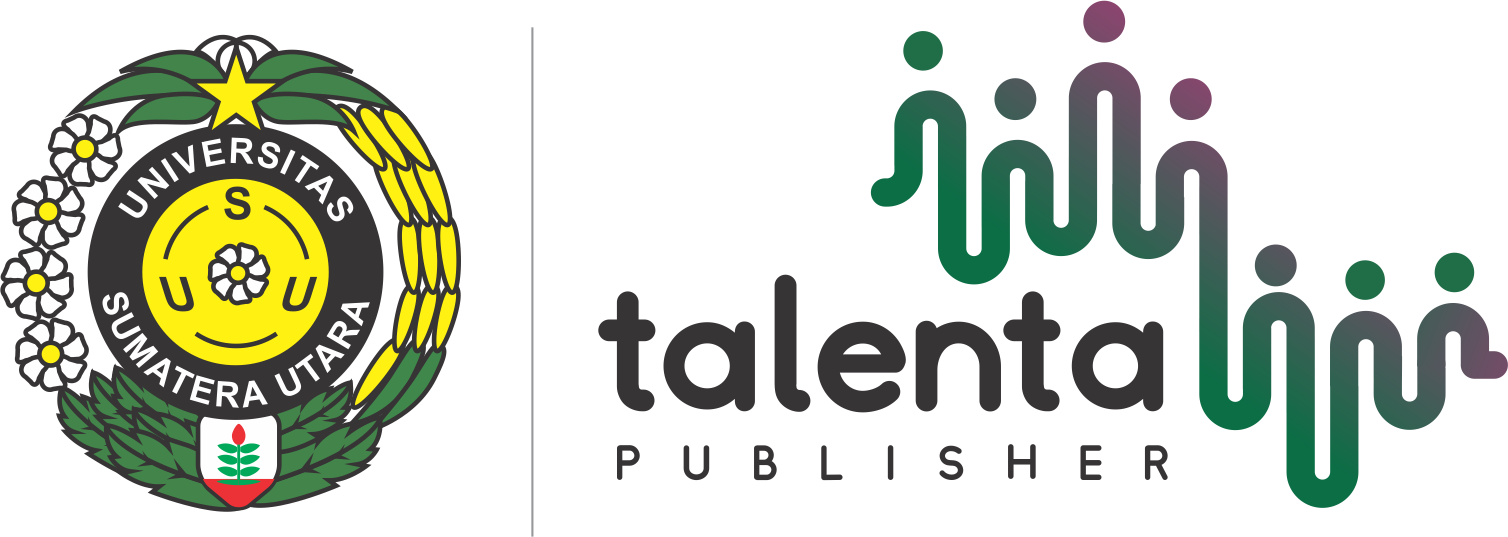Peluang dan Tantangan Pengembangan Rantai Pasok bagi Peningkatan Nilai Produk Nanas dari Kabupaten Tapanuli Utara
Opportunities and Challenges of Supply Chain Development for Increasing the Value of Pineapple Products from North Tapanuli Regency
| Authors | ||
| Issue | Vol 2 No 4 (2019): Talenta Conference Series: Energy and Engineering (EE) | |
| Section | Articles | |
| Section |
Copyright (c) 2019 TALENTA Publisher  This work is licensed under a Creative Commons Attribution-NonCommercial-NoDerivatives 4.0 International License. |
|
| Galley | ||
| DOI: | https://doi.org/10.32734/ee.v2i4.650 | |
| Keywords: | Nanas Kabupaten Tapanuli Utara Rantai Pasok Nilai Tambah Analisis SWOT Pineapple orth Tapanuli Regency Supply Chain Added Value SWOT Analysis | |
| Published | 2019-12-18 |
Abstract
Penelitian ini dimaksudkan untuk menyusun strategi yang tepat dalam peningkatan nilai tambah nanas di Kabupaten Tapanuli Utara yang dapat mempengaruhi ekonomi satiap pemangku kepentingan yang terlibat. Dalam mencapai tujuan telah dilakukan langkah- langkah yang terdiri dari: i) Mengidentifikasi model-model rantai pasok nanas di sentra produksi nanas yaitu di Kecamatan Sipahutar. ii) Menganalisis rantai nilai dan nilai tambah pada setiap aktor rantai pasok peran. Metode yang digunakan dalam aktivitas ini adalah deskriptif-eksploratif yang mencakup: i) Metode kualitatif mencakup studi literatur dalam memperoleh data dan acuan pengerjaan, observasi dan wawancara dengan pelaku rantai pasok, lembaga terkait (Penyuluh Pertanian Lapangan Kecamatan Sipahutar, Dinas Pertanian dan Dinas Koperasi UKM Kabupaten Tapanuli Utara). ii) Metode Hayami untuk menganalisis nilai tambah nanas. Dari hasil penelitian ini didapatkan fakta bahwa luas produktif pertanian nanas di Kabupaten Tapanuli Utara 1947.09 Ha dengan kapasitas produksi sebesar 34875.16 ton/tahun. Pasokan nanas distribusikan dalam 2 model rantai pasokan yaitu rantai pasok nanas segar dan rantai pasok dodol nanas. Dalam rantai pasokan ada 7 pihak yang terlibat sebagai stakeholder yaitu petani, pengumpul desa, pedagang besar luar/dalam daerah, pedagang pengecer, UKM dan konsumen akhir. Dari pemetaan rantai nilai didapatkan bahwa nilai R/C tertinggi diperoleh UKM dodol nanas (1,60) dan terendah adalah petani nanas (1.14), pengumpul, pedagang besar dan pedagang pengecer mendapatkan nilai R/C masing-masing 1.22, 1.45, dan 1.45. Data dan informasi ini diolah dalam sebuah analisis SWOT diperoleh tantangan dan peluang yang perlu diperhatikan untuk mengembangkan rantai pasok demi mengembangkan nilai produk nanas. Diantaranya yaitu pengembangan produk turunan, membuat sentra produk pengolahan, pelatihan terhadap UKM produk turunan nanas dan membuat koperasi sebagai penghubung antara petani dan pedagang pengecer.
This research is intended to develop the right strategy in increasing the added value of pineapple in North Tapanuli Regency which can affect the economy as well as the stakeholders involved. In achieving the objectives, steps have been taken which consist of: i) Identifying pineapple supply chain models at pineapple production centers, namely in Sipahutar District. ii) Analyzing value and value added chains for each role supply chain actor. The method used in this activity is descriptive-explorative which includes: i) Qualitative methods include the study of literature in obtaining data and reference to work, observation and interviews with supply chain actors, related institutions (Agricultural Extension Fields of Sipahutar District, Agriculture Service and UKM Cooperative Office North Tapanuli Regency). ii) Hayami's method for analyzing the added value of pineapple. From the results of this study, it was found that the area of productive pineapple farming in North Tapanuli Regency was 1947.09 Ha with a production capacity of 34875.16 tons / year. The supply of pineapple is distributed in 2 supply chain models, namely supply chain of fresh pineapple and supply chain of pineapple dodol. In the supply chain there are 7 parties involved as stakeholders, namely farmers, village collectors, outside / regional large traders, retailers, UKM and end consumers. From the value chain mapping it was found that the highest R / C value was obtained by pineapple dodol (1.60) and the lowest was pineapple farmers (1.15), collectors, wholesalers and retailers getting R / C values of 1.22, 1.45 and 1.45 . This data and information is processed in a SWOT analysis, which presents challenges and opportunities that need to be considered to develop the supply chain to develop the value of pineapple products. Among them are the development of derivative products, making processing product centers, training of UKM derived from pineapple products and making cooperatives as a liaison between farmers and retailers.






